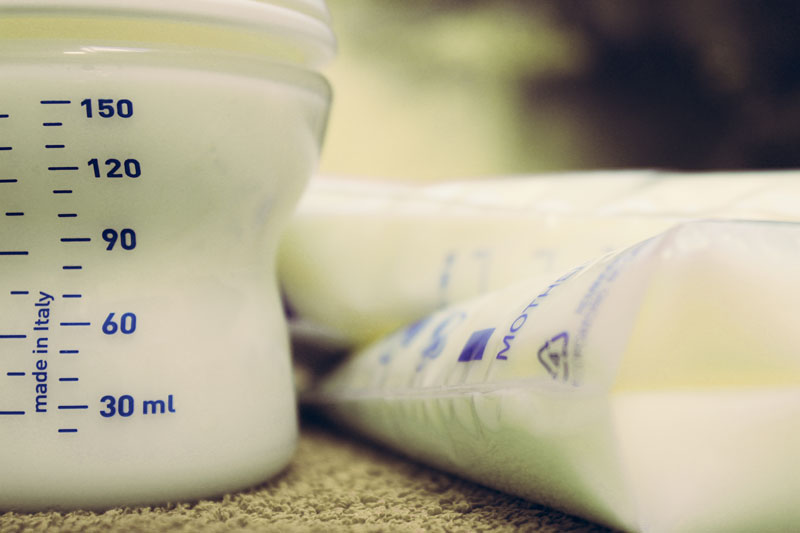Milk and Feeding Management In the 21st Century

In June of 2021, AngelEye Health announced the general availability of its MilkTracker milk and feeding management application, the fourth solution in their family engagement portfolio of products. One year on, we sat down with Seamaf Bchihalouk, product manager and head of the original MilkTracker development team, and Grace Goodwin Dwyer, MS, MA, RD, IBCLC, registered dietitian & lactation consultant, to catch up and discuss the evolution of the offering’s ability to make the NICU feeding process safer for patients, more efficient for staff, and more engaging for families.
Thanks to you both for taking the time to chat with us. For readers who may be a bit unfamiliar with MilkTracker, should we start with a quick overview of the technology?
Seamaf: MilkTracker was purpose-built by my team of clinicians with the mission of addressing NICU resource challenges by offering a simplified way to manage milk inventory while ensuring that the right feed matches the right patient every time. Our goal with our milk and feeding management solution was to mitigate risk and enhance safety throughout the feeding process. MilkTracker was designed specifically to address this workflow need head-on and truly modernize the NICU feeding experience.
Can we talk a bit more about these challenges?
Grace: Nurses in the NICU spend significant time and energy managing milk and formula for their patients, typically for multiple patients at once. These efforts include not only feeding but also monitoring, labeling, printing, and logging feeds. If you think about these extensive efforts coupled with all the other responsibilities that nurses shoulder while caring for a hospital’s youngest and most vulnerable patients, it is a lot to manage. These pressures can lead to staff burnout and increase the potential for error in the unit.
And how exactly does MilkTracker address these resource obstacles head-on?
Seamaf: MilkTracker was launched to tackle the feeding and milk management issues we previously mentioned. By leveraging the power of IT to automate many of the previously manual processes coupled with the ability to integrate into most EHRs, our technology supports automated data entry of feeding and fortification statistics. In addition, bar-code scanning and electronic medical record integration reduce human error, increase efficiency, and help hospitals automatically track valuable human milk and feeding data. The end result? Valuable time and resource waste shrink, and the risk of feeding mistakes is minimized.
Thanks for the background. So now your team is evolving the offering to streamline the feeding and milk inventory management process even more while also elevating family collaboration, correct?
Seamaf: Yes! Building off the success of the original MilkTracker offering, this year our team set out to evolve the platform even further. We’ve added a layer of features and functionalities in response to the clinical needs our team identified and conversations we have had with our hospital partners over the past 12 months.
Grace: I would also point out that we also considered evolving industry best practices outlined by regulatory bodies like the Joint Commission and organizations like HIMSS and the Academy of Nutrition and Dietetics, which help inform the product’s direction.
So, tell us about these new capabilities.
Seamaf: Well first we are excited to announce that Milktracker is now available on iOS, Android, and desktop which elevates accessibility for the offering. This will be especially important as we are also rolling out new MilkTracker features for parents, designed to empower them with tools to support lactation, including logging pumping sessions, visualizing milk production over time, and accessing lactation support via two-way chat.
Grace: We are also introducing an easier way for NICUs to approach recipe calculations when fortifying or mixing feeds. Now we are maintaining a comprehensive human milk and formula recipe dictionary to provide hospitals with accurate, updated calculations for a wide variety of products needed to accurately feed neonatal and pediatric patients.
And then there are some advanced analytics capabilities?
Seamaf: That’s correct. With this update, we are now offering in-app reports and analytics, which allow care teams to quickly and easily view the Patient Inventory & Feeding Report to support workflows and maximize inventory in a timely manner.
Finally, there are some new elements related to more streamlined application integration as well. Can we talk about this a bit?
Grace: We are excited to announce that MilkTracker Milk and Feeding Management solution has now been integrated into the AngelEye Health app, which means that parents can access all of our family engagement tools and resources from a single location. Being able to view your baby from an AngelEye Health camera and then access lactation tools (like the pumping log) within the same app is a total game changer!!
So what’s next for Milk Tracker?
Semaf: As a team, we remain committed to ensuring the safety of all NICU patients and finding even more ways to support our hospital partners and parents in meeting their feeding goals. As such, we will continue to evolve the MilkTracker solution over time, including adding more customizable reporting and advanced data visibility capabilities as well as additional functionalities to support lactation.
